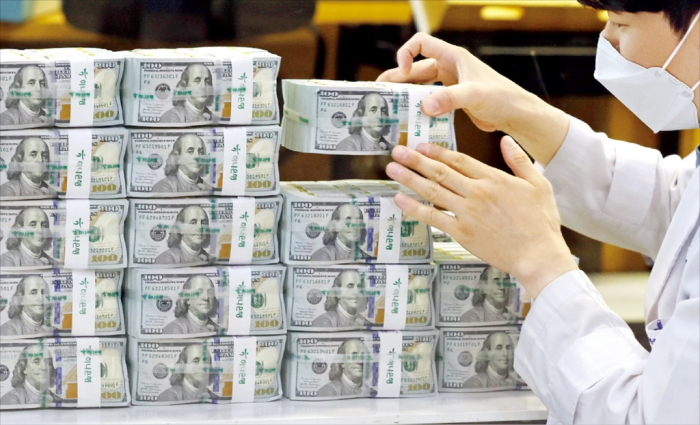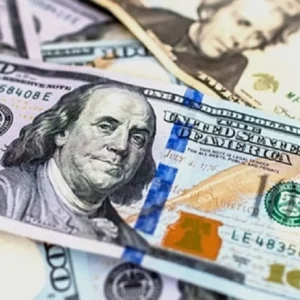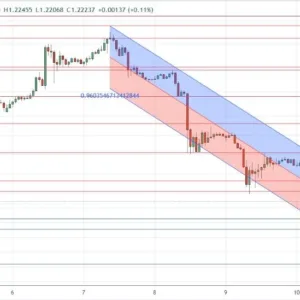- GBP/USD Price Analysis: Sterling Steady Ahead of US Inflation
- GBP/USD Signal Today – 19/12: Sterling Faces Risk (Chart)
- Euro Seeks Higher Grounds After Fed-Fueled Dollar Rally Eases Grip on Forex — TradingView News
- Dollar Index Slips from 2-Year High as FX Markets Brace for US Inflation Data — TradingView News
- Recovering PMIs – Action Forex
The National Pension Service (NPS), South Korea’s state-run pension fund and the country’s largest institutional investor, is set to begin strategic currency hedging to unload dollars as much as $48.2 billion through the end of this year to help restrain the strength of the greenback against the won.
Bạn đang xem: NPS initiates strategic currency hedging to unleash up to $48.2 billion
According to investment banking industry sources on Friday, the NPS plans to activate its strategic currency hedging mechanism for the first time since it introduced the system at the end of 2022.
Once the system is initiated, the move will be tantamount to injecting up to $4 billion a month into the domestic foreign exchange market, totaling $48.2 billion, sources said.
Strategic currency hedging involves increasing the hedging ratio for all of NPS’ overseas assets to as high as 10%.
The mechanism is triggered when exchange rate fluctuations fall outside a 99% confidence interval for more than five trading days. This is defined as extreme values representing less than 1% of historical exchange rates since 2001, calculated based on the daily market average rate, more commonly called MAR.
Sources said the conditions for activating the mechanism were met around the start of the new year.
HEDGING OVER 12 MONTHS
Xem thêm : Forex business reform improve efficiency, provides guidance for firms
Rather than implementing the strategic hedge in one go, the NPS plans to spread it over 12 months, at a rate of $4 billion per month, to minimize any negative impacts on the local foreign exchange market.
The hedge will be terminated if the dollar-won exchange rate stabilizes around the low-1,400 won per dollar range, sources said.
In Seoul trade, the US dollar opened at 1,469.0 won on Friday, up from 1,466.6 won on Thursday, the first trading day of 2025.

If fully implemented, strategic currency hedging would release $48.2 billion into the domestic foreign exchange market – equivalent to 10% of NPS’s overseas assets as of the end of October 2022.
The hedging process involves selling forward contracts, fixing future dollar receipts at a predetermined rate and selling them to banks. The banks, in turn, should borrow an equivalent amount of dollar spot from overseas and sell it in the domestic foreign exchange market, resulting in increased dollar supply.
TAPPING INTO FOREX SWAP WITH BOK
The NPS is expected to use its foreign exchange swap agreement with the Bank of Korea to carry out its strategic hedging.
When the NPS requires dollars for new overseas investments, it taps into the BOK’s foreign exchange reserves under an agreement and repays them later.

The state fund recently expanded its foreign exchange swap limit to $65 billion from $50 billion and extended its agreement with the central bank to the end of this year.
Xem thêm : Pulls Back Before FOMC (Video)
Industry officials said although the NPS’ activation of the strategic hedging mechanism is unlikely to fundamentally alter the exchange rate dynamics, it is expected to temper the strength of the dollar to some extent.
Separately, the pension fund is engaged in tactical currency hedging – a move that is also expected to help stabilize the currency market.
Tactical hedging refers to adjustments made at the discretion of the NPS fund management committee, the state fund’s top decision-making body, while strategic hedging involves setting a uniform hedging ratio for all its overseas assets.
As of the end of October 2023, the NPS undertook tactical hedging amounting to $13.36 billion, or 2.77% of its overseas assets.
Tactical hedging is allowed to cover up to 5% of its overseas assets – an additional injection of some $10.9 billion into the market if necessary.
Write to Byeong-hwa Ryu at [email protected]
In-Soo Nam edited this article.
Nguồn: https://cumlaude.fun
Danh mục: News






